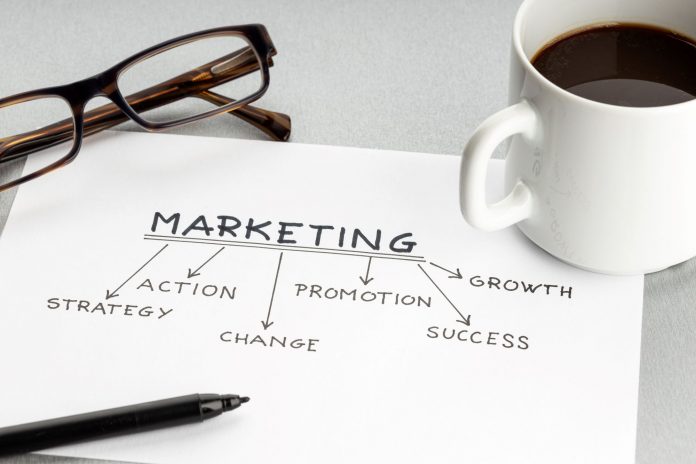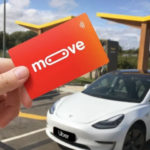Being aware of various technological perks and embracing the relevant tools gives your startup a competitive edge in the marketplace and bolsters its chances for success. What’s more, progressive improvement and automation, especially in marketing strategies, are essential aspects that will ultimately lead to any venture’s maturation.
Marketing funnels are potent tools that automate a consistent flow of qualified leads. They visualize the path clients take from the initial discovery of your brand to converting. Still, it’s somewhat uncertain, especially for startups and SMEs, whether focusing on setting a quality marketing funnel is a relevant strategy for understanding today’s consumer buying practice.
Fortunately, this post establishes the basic framework for the funnel, and in return, you can determine if it’s an ideal fit to optimize your startup’s marketing efforts.
What’s a marketing funnel
A marketing funnel is a roadmap laid out by a company to visualize customers’ journey from finding out about their brand and offerings to ultimately acquiring products/services. Other terms such as sales/purchase funnel, conversion funnel, and customer journey are often used interchangeably to refer to the marketing funnel.
Ideally, and akin to a funnel, marketers cast a broad net to acquire several leads. Subsequently, they gradually nurture potential customers through the purchasing decision, narrowing down these candidates in each funnel’s stage.
From another perspective; in a perfect world, all individuals who discover your brand should become your customers and, better, returning customers who refer their friends and promote your brand by word of mouth.
Sadly, this isn’t the case in the natural business realm. From knowing about your brand to becoming actual customers, the number of individuals gets lower as they move down the funnel. As a result, it’s marketers’ utmost priority to try to turn several leads into customers, making the funnel wider and somewhat cylindrical. They have to acquire and lure as many prospective clients as possible to become long-term associates.
There isn’t a one-size-fits-all approach for the marketing funnel stages. Instead, it depends on the business type or model, customers’ behavior, and marketers’ unique objectives. As you can imagine, some have many stages, while others have a few.
Nonetheless, the standard concept of all marketing funnels is breaking down the clientele journey into steps, evaluating and enhancing how adequately these steps convert one into another. Here are the prevalent stages of the marketing funnel:
Marketing funnel stages
In most cases, entrepreneurs prefer keeping their model elementary by adopting the “TOFU-MOFU-BOFU” technique, acronyms for the top of the funnel, middle of the funnel, and bottom of the funnel, respectively. Alternatively, these stages are interchangeable with awareness, consideration, and decision.
On the other hand, some prefer incorporating loyalty and advocacy stages into the funnel to optimize their marketing strategy. Understanding each phase’s intricacies helps marketers deliver the right type, volume, and frequency of marketing without being overly persistent and annoying to drive prospective customers away. Here is a comprehensive guide on each phase:
TOFU: top of the funnel (awareness)
Sitting on top of the marketing funnel is the awareness stage. This means that potential customers may not be familiar with your brand or offerings, yet they have developed a need for your products/services. It’s more of a research-driven phase whereby users identify a problem and subsequently want information and answers.
As a result, marketers have to search for a high volume of leads without necessarily pressuring prospective clients by only offering relevant information that addresses their needs, queries, or problems. Moreover, it would be best to provide educational and enticing information. In doing so, marketers introduce their product/services as possible solutions, positioning their brand as a helpful resource and solidifying their commitment to the visitor’s area of interest.
Conversions are usually shallow at the top of the funnel phase. Therefore, your utmost priority is to promote your startup, increase awareness and establish trust with potential customers. Even better, gather your visitors’ emails and proactively continue communicating with them through nurturing initiatives.
Blog posts, social media posts, Google ads, Facebook ads, videos, and infographics are excellent ways to reach a wide number of potential customers at the TOFU stage.
MOFU: middle of the funnel (consideration)
MOFU represents a smaller and more qualified slice of your startup’s target audience. Prospective customers now view your brand as a possible solution, but still, they are comparing other brands and other solutions. As such, it’s only reasonable for marketers to position their organization as the best provider of products/services to suit clients’ needs by offering as much information as is feasible.
Establish their trust in your startup’s expertise and the quality of your products. In addition, distinguish yourself from competitors. Nonetheless, MOFU visitors are researching how to solve their problems, so it’s best not to oversell at this stage. Instead, provide the relevant information through podcasts, comparison charts, webinars, demos, and free trials to empower potential customers to move into the decision phase as well-equipped as possible. And importantly, prudently in your favor.
BOFU: bottom of the funnel (decision)
The BOFU phase constitutes the most minor and most lucrative pool of prospects. These individuals have committed to sticking with you through the two higher funnel stages, and they need a little extra push to decide to acquire your products/services. Therefore, overselling is most appropriate during this stage.
Still, it’s vital to take a consultative approach to help potential customers decide. A practical and effective approach to this is to forego convincing the lead to acquire the product and instead assume that they’re already buying it and help them tailor the purchase to their individual needs. For instance, offer warranties and assure top-notch customer support to make the purchase appear less risky. The final stage of the marketing funnel is all about setting your startup apart from your competitors to convert those qualified leads.
Loyalty and advocacy
Some marketers and entrepreneurs might incorporate loyalty and advocacy stages as outlined above. The former entails actions for turning a one-time customer into a regular one, while the latter involves your clientele becoming a brand advocate. Post-purchase behavior is a collective term referring to loyalty and advocacy stages.
Does your business need a marketing funnel?
A marketing funnel is vital to lead generation. It simplifies the customer journey, making it easy for your startup to follow. In a nutshell, you can visualize all the stages of connecting with customers, identify where you lose them, and in return, you can make strategic decisions to know what tools and techniques to keep them engaged with your brand.
Here are other notable benefits of a marketing funnel:
- A marketing funnel helps you remain consistent with your advertisements. You don’t have to puzzle over the following steps to attract and retain clients.
- Increase in sales.
- Knowing your customers’ journey allows you to automate your marketing strategies, making promotion campaigns more efficient and less time-consuming.
- A marketing funnel allows you to comprehend the efficacy of your marketing techniques better. Knowing a lead conversion for each stage enables you to forecast future sales.









